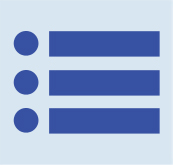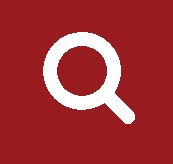Children and Youth with Special Health Care Needs (CYSHCN), Application Year FY 2022
The 2020 needs assessment process identified that CYSHCN, ages 12-17, in Ohio were 17% less likely than U.S. peers to receive the services necessary to transition to the adult healthcare system in 2016-2017. Results from the needs assessment and stakeholder meetings with families and clinicians held on a quarterly basis emphasized the continued need for improved care coordination and additional planning for CYSHCN transitions from adolescence to adulthood. As such, ODH developed strategies to address these needs and work towards identified objectives.
Emerging Issues
Due to the COVID-19 pandemic, beginning March 2020 through February 28, 2021, the Children with Medical Handicaps Program (CMH) auto renewed treatment for families enrolled in the treatment program. Beginning with cases that expire March 1, 2021 or later, providers will receive renewal applications and families will receive financial packets. Families experiencing a financial hardship that have been denied for income reasons may file an appeal or contact the CMH call center for assistance. Telehealth visits will continue to be an option for families to utilize during the ongoing pandemic.
The CMH program continues to serve families through Field Nurse Managers and Parent Consultants partnering with the local county/health district Public Health Nurses. Some counties are reporting that nurses are beginning to return to CMH work, but there are many still focused on COVID-19 response within their county/health district.
The CYSHCN group has identified 5 sub workgroups for stakeholders and internal team members to implement strategies and activities. Each workgroup will include the cross-cutting priority for health equity/Social Determinants of Health (SDOH). Each workgroup will also include a member of the CMH Parent Advisory Committee to be sure and include a strong family/parent perspective. These workgroups will meet at the least bi-monthly to ensure the projects within the workplan is followed.
- Family Engagement
- Physician Work Group/Provider Outreach
- Care Coordination
- Transition Health Care
- Transition Non-Health Care
Priority: Increase prevalence of children with special health care needs receiving integrated physical, behavioral, developmental, and mental health services.
Measures:
- NOM 17.2: Percent of children with special health care needs (0-17) who receive care in a well-functioning system
- NPM 12: Percent of adolescents (12-17) who received services necessary to make transitions to adult health care
- ESM: Percent of CYSHCN ages 12-17 and older enrolled in CMH with a transition plan in place.
Stakeholders recommended the priority to increase the prevalence of children with special health care needs to receive integrated services as a result of the state needs assessment. The selected NPM directly relates to the need for transition services identified through the needs assessment. The ESM for the NPM is percent of CYSHCN enrolled in CMH with a transition plan in place. The selected ESM will help to measure our progress in ensuring young adults transition into being able to participate as the primary decisionmaker more fully in their care moving forward.
Strategies:
-
Work with adult and pediatric medical providers to assure knowledge and awareness of transition.
- Representation on the CYSHCN group includes members from Ohio children’s hospitals and adult care hospitals to learn from current transition teams in place.
-
Work with partners to increase the number of adult providers that serve CYSHCN population and participate in transition planning.
- The CMH program is actively working with varying specialty clinics to onboard adult hospitals/providers who are now actively providing care to youth/young adults who are active on the CMH program.
-
Work with partners to assure family and teen knowledge and support regarding transition.
- Ohio Family 2 Family (F2F)/ODH hosted a Transition Bootcamp workshop in March to discuss emergency preparedness and focus on transition. Ohio F2F/UCCEEDD also hosted a Transition Bootcamp conference that highlighted many topics re: transition both inside and outside of healthcare. The conference was very well attended.
- Our Parent Consultant is working with the CMH program to form a Youth Advisory Committee that will be established in Fall 2021.
-
Support children’s and adult hospital systems in the same geographic area to conduct pilot transition projects.
- Strategy updated with new language to represent broader approach to increasing pilot transition support. Previous language: “Release RFP for children’s and adult hospital system in the same geographic area to conduct pilot transition project that includes a coordinator in each system and standard model for charting and implementing a life course plan.” Development of the RFP was delayed due to the COVID-19 pandemic and since then meetings with hospitals systems have commenced with conversations on supporting such projects without the RFP constraints.
-
Identify social determinant barriers in medical transition and require transition planning model to address.
- Explore opportunities to raise awareness of social determinant barriers during orientation of CMH hospital-based team service coordinators.
- Work with community partners on several SDOH projects regarding insurance, housing, financial support, etc.
- Utilize Charting the LifeCourse framework with CYSHCN families to help their lived experience voice be better understood in service/support settings both inside and outside of healthcare (specialty physicians/hospitals, schools, job placement, local DD SSA teams, etc.).
Objective: By 6/30/2023, develop a plan for increasing the percent of Ohio's adolescents with special health care needs, ages 12 through 17, who received services to support transitions to adulthood outside health care.
Strategies:
-
Explore non-health care transition resources and methods of sharing, including in health care transition planning and education (including identifying and educating those who will be responsible for sharing resources with individuals and families).
- Develop additional partnerships with Job and Family Services (JFS foster care/bridges), Department of Developmental Disabilities (DODD), military, Social Security Administration (SSA), Opportunities for Ohioans with Disabilities (OOD), Ohio Department of Education (ODE), and other entities who assist with non-health care transition.
- Develop additional partnerships with county level providers, adult practitioners, non-profits, WIC, housing, employment (ref stakeholder list email from 1/6/21) to serve on external work group and/or sub work groups.
- Explore ideas for a pilot program with CMH Field Nurse Managers/PHNs utilizing the Charting the LifeCourse tools (this will help with guiding teens/young adults participating in the CMH program who are transitioning from child specialists to adult specialists).
-
Explore mechanisms for automatic referrals for children at certain age to those other programs that would help transition to other supports/systems.
- Explore automatic resource sharing for services available through community systems, OCALI, OOD, DODD, OCECD, Medicaid, State Support Teams, etc. who are serving the same populations.
Objective: By 2025, Increase percent of Ohio's children with special health care needs, ages 0-17, who receive care in a well-functioning system by 10%.
Strategies:
-
Work with partners to coordinate services within clinical and non-clinical service delivery systems (e.g., explore interagency agreements, automatic referral mechanisms, coordinated outreach and education).
- Explore partnerships with programs within BMCFH, WIC, Birth Defects (OCCSN), Infant Hearing Program, Lead, and Early Intervention.
- Explore activities to eliminate disparities and ensure equitable health care for children with special health care needs.
-
Leverage partnerships with children’s hospitals who provide Hospital-Based Service Coordination (HBSC) for CYSHCN enrolled in the CMH program to embed service coordination plans in electronic medical records for access/use by all clinicians and caregivers.
- Explore opportunities to capture social determinant barriers in systems such as electronic medical records and in the current PHN manual.
-
Seek ways to expand HBSC for CYSHCN not enrolled in CMH.
- Working on ways to partner with children’s hospital teams to identify ways to expand services.
-
Promote Parent-to Parent mentoring model to assist parents with navigating complex medical systems.
- Promote the Ohio F2F has implemented a P2P (Parent to Parent) peer program - https://www.ohiof2f.org/ohiop2p/.
-
Work with partners to develop action team to examine previous preparedness workbook and develop new plan for increasing resources to develop emergency preparedness plans among CYSHCN.
- ODH has formed a partnership with Ohio F2F on an Emergency Situations Toolkit. This work will be highlighted at a session during the June 2021 national Family Voices Conference.
- ODH is partnering with Ohio F2F on creating a Telehealth fact sheet to distribute to families.
Other Efforts Supported by Title V
The majority of MCH programs serving the CYSHCN population are represented within the above application narrative. Several program summaries are included below to highlight additional relevant programs, and many of the programs presented in the Perinatal/Infant, Child, and Adolescent Applications also serve CYSHCN (notably: Comprehensive Genetics Service Program, Sickle Cell Services Program, Newborn Screening for Clinical Congenital Heart Disease, Infant Hearing Program, and Ohio Connections for Children with Special Needs- Birth Defects Surveillance). Please see the Program Map (section V. Supporting Documents) for the full list of programs.
Ohio Hearing Aid Assistance Program (OHAAP)
The Ohio Hearing Aid Assistance Program (OHAAP) is an earmarked program funded by the Ohio legislature, in Section 285.20 of Amended Substitute HB 59 of the 130th General Assembly in 2013. OHAAP provides assistance to eligible families with children up to twenty-one years of age with permanent hearing impairments to purchase hearing aids. Eligibility requirements include Ohio residency for family and child; hearing loss diagnosis; and, family’s income is below 400 percent of the federal poverty guidelines based upon adjusted gross income or annual salary. Children enrolled or who can qualify for Medicaid or the Children with Medical Handicaps Program (CMH) are not eligible for OHAAP. Families who apply for hearing aid assistance may be required to pay a fee based on a sliding scale schedule for audiological services.
Metabolic Formula Program
The Ohio Department of Health (ODH) provides metabolic formula to individuals born with inborn errors of metabolism which are flagged on the Ohio Newborn Screening Panel. Examples of these disorders include phenylketonuria (PKU), maple syrup urine disease (MSUD), tyrosinemia, and propionic acidemia. A full list of eligible disorders can be found on the Children with Medical Handicaps page at the Ohio Department of Health website. Without these special formulas, individuals, especially infants and young children, may develop poor health outcomes and irreversible developmental delays. Every year in Ohio, more than 30 babies are born with a metabolic disorder resulting in a diagnosis eligible for receiving metabolic formula from the Ohio Metabolic Formula Program. It is recommended that individuals with these diseases remain on metabolic formula for their lifetime.
To Top
Narrative Search




